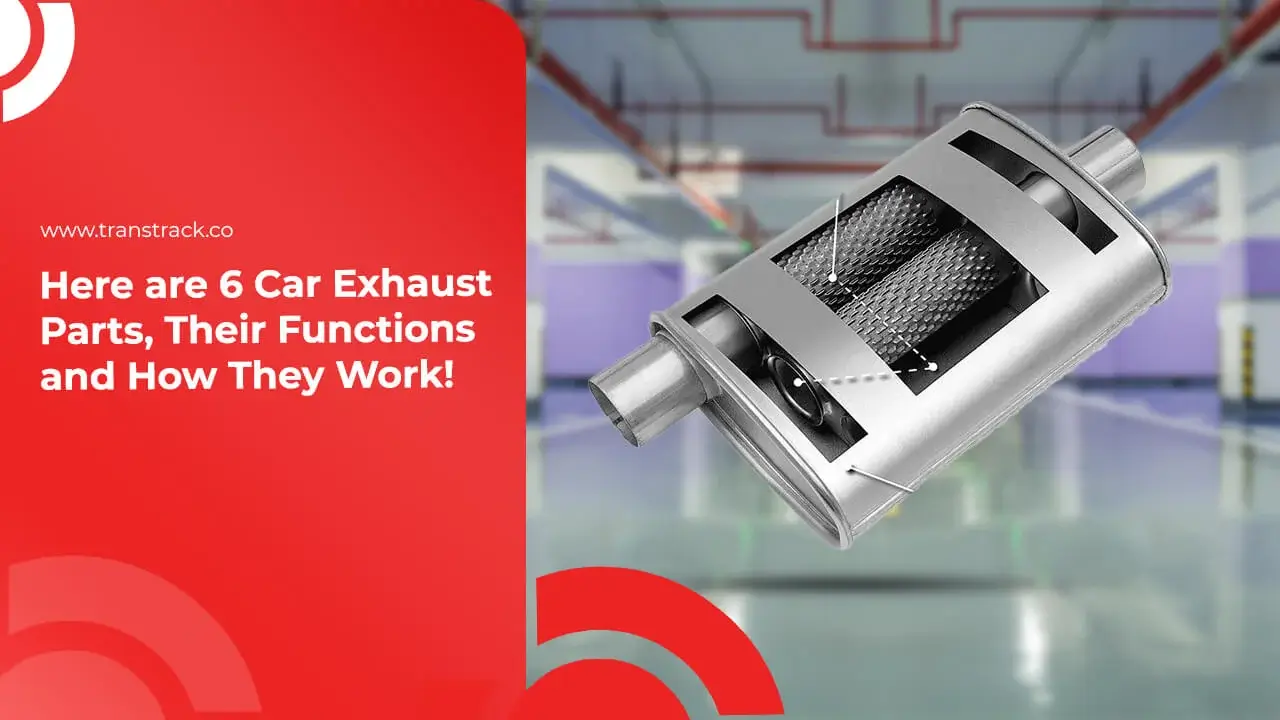Here are 6 Car Exhaust Parts, Their Functions and How They Work!
Posted on March 28, 2024 by Nur Wachda Mihmidati

An exhaust is more than just a “tube” at the back of your vehicle. It is one of the most critical components in the vehicle system that affects engine performance, fuel efficiency and environmental impact. By understanding the main parts of a car exhaust and how they interact, you can take steps to ensure your vehicle continues to operate optimally.
In this article TransTRACK, we will explore the crucial parts of a car exhaust, from the collector to the tailpipe. We will also discuss the role of each component and the importance of keeping them in the best condition. In addition, we will integrate a modern approach to vehicle maintenance by introducing TransTRACK’s Vehicle Maintenance System, a smart solution for managing your vehicle’s maintenance schedule, including the exhaust system.
Let’s take a deeper look at how an in-depth understanding of the exhaust can help you maintain your vehicle more effectively, improve engine performance, and minimize environmental impact.
6 parts of a car muffler
The parts of a car exhaust generally consist of:
Exhaust Manifold (Exhaust Collector)
- The exhaust manifold is the first part of a car’s exhaust system.
- It is usually made of heat-resistant metals such as stainless steel or cast iron.
- Its function is to collect exhaust gases from each cylinder of the car engine and direct them into a single pipe for further travel through the exhaust system.
Exhaust Pipe
- After the exhaust gases are collected by the exhaust manifold, the exhaust pipe conveys the gases to the next parts of the exhaust system.
- It is usually made of metal that is resistant to heat and corrosion.
Catalytic Converter
- A converter catalyst is one of the most important components in a modern exhaust system.
- It functions to convert harmful gases in car exhaust, such as carbon monoxide (CO), hydrocarbons (HC), and nitrogen oxides (NOx), into safer gases such as carbon dioxide (CO2) and water.
- This transformation process uses catalysts made of precious metals such as platinum, palladium, and rhodium.
Resonator (Resonator)
- Resonators are additional components present in some car exhaust systems.
- Its function is to dampen or reduce the high-frequency sound produced by the engine, helping to create a smoother and more comfortable exhaust sound.
- Resonators are usually made of metal and have an inner structure designed to absorb and dampen sound waves.
Muffler (Silencer)
- The muffler, or silencer, is also the component responsible for muffling the sound of the exhaust.
- It usually consists of several inner chambers and metal fibers designed to dampen and block the sound waves generated by the exhaust gases.
- Mufflers can also help reduce the pressure generated by exhaust gases, helping to improve engine performance.
Tailpipe
- The tailpipe is the last part of a car’s exhaust system.
- It is the pipe that carries the exhaust gases that have been treated by the converter catalyst and reduced in sound by the resonator and muffler, and then discharges them into the atmosphere.
- The tailpipe also plays a role in stabilizing the air pressure inside the exhaust system.
With the combination of all these parts, a car’s exhaust system can efficiently circulate exhaust gases from the engine, reduce harmful emissions, and produce a desirable exhaust sound that is safe for the environment.
To ensure that all exhaust components and other vehicle parts remain in the best possible condition, there needs to be a well-planned and managed maintenance system. One solution that can help with this is using the TransTRACK Vehicle Maintenance System.
TransTRACK Vehicle Maintenance System is a platform specifically designed to assist vehicle owners in tracking and scheduling routine maintenance, including exhaust maintenance. With TransTRACK, you can:
- Set Routine Maintenance Schedules: The system allows you to set maintenance schedules based on kilometers, time, or other indicators, including exhaust inspection and maintenance.
- Track Maintenance History: You can view the complete maintenance history of the vehicle, including all work performed on the exhaust system.
- Receive Maintenance Alerts: TransTRACK can provide automatic alerts about upcoming scheduled maintenance, including exhaust checks, so you won’t miss the right time to maintain your vehicle.
By adopting the TransTRACK Vehicle Maintenance System, you can ensure your vehicle remains in optimal condition, including its exhaust system, thus improving the overall safety, comfort and efficiency of your vehicle.
Recent Post
Topic :
vehicle enginevehicle maintenance
 Bahasa Indonesia
Bahasa Indonesia









